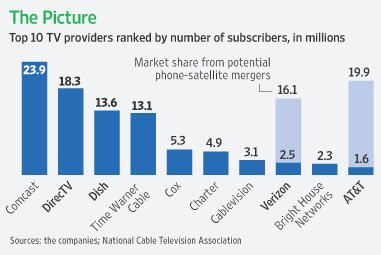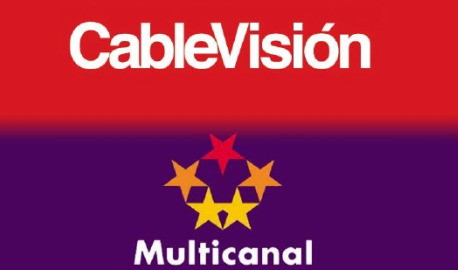Astroturf: One of the underhanded tactics increasingly being used by telecom companies is “Astroturf lobbying” – creating front groups that try to mimic true grassroots, but that are all about corporate money, not citizen power. Astroturf lobbying is hardly a new approach. Senator Lloyd Bentsen is credited with coining the term in the 1980s to describe corporations’ big-money efforts to put fake grassroots pressure on Congress. Astroturf campaigns generally claim to represent huge numbers of citizens, but in reality their public support is minimal or nonexistent. — Common Cause’s Wolves in Sheep’s Clothing Part II: More Telecom Industry Front Groups and Astroturf.”
The telecommunications industry has gone all out with a new super-sized front group claiming to “work to bring the Internet to everyone.” The so-called Broadband for America (BfA) Coalition launched a new website, Broadband for America, which is completely infested with industry players and groups they call “independent consumer advocacy groups,” but are in reality mostly astroturfers themselves. More than 100 corporate providers and special interest front groups make up the BfA, which they brazenly claim “represent the hundreds of millions of Americans who are literally connected through broadband.”
Of course, what is missing from this mess are the hundreds of millions of actual American consumers. They aren’t on the list. Also missing after checking more than 100 BfA member websites is any press push to notify their members they are now a part of this group. In fact, none of the so-called public interest websites seemed at all interested in promoting their new found friends.
The BfA wants you to think the industry party list is a strength, not a weakness:
The range of members of BfA is evidence of the importance which is being placed on the issues of broadband availability and broadband adoption. It is also evidence of BfA’s commitment to being a full participant on behalf of all stakeholders to provide a central clearinghouse for the latest thinking, the most advanced assessments, and the widest variety of views and opinions on the future of broadband in America.
That’s a word salad that can be condensed down considerably to: The Mother of All Astroturf Front Groups.
A comprehensive guide to the members of the BfA can be found below. It was developed from extensive research into the background and financing of many of these groups, as well as their membership in classic astroturf groups that are run against consumer interests.
ADC Telecommunications, Inc.
Advanced Digital Broadcast
Alloptic
American Agri-Women
American Association of People with Disabilities
American Council on Renewable Energy
Americans for Technology Leadership
ARRIS
AT&T
BendBroadband
BeSafe
BigBand Networks, Inc.
BTECH Inc.
Cablevision Systems Corporation
CBM of America, Inc.
CenturyLink
Charles Industries, Ltd.
Child Safety Task Force
Cisco
CoAdna Photonics, Inc.
Comcast
CommScope, Inc.
Condux International, Inc.
Consumers First
Corning Incorporated
Cox Communications
CTIA The Wireless Association
DC-Primary Care Association
Dominican American National Roundtable
Enhanced Telecommunications Inc
Fiber to the Home Council
FiberControl
Global Crossing
Hispanic Leadership Fund
Independent Technologies Inc.
Independent Telephone and Telecommunications Alliance (ITTA)
International Association for K-12 Online
Intertribal Agriculture Council
Itaas Inc.
Jewish Energy Project
Latinos in Information Science & Technology Association
Livestock Marketing Association
LookBothWays
MANA (A National Latina Organization)
Motorola
MRV Communications, Inc.
National Association of Manufacturers
National Black Chamber of Commerce
National Cable & Telecommunications Association
National Caucus and Center on Black Aged
National Disease Cluster Alliance
National Grange
National Puerto Rican Coalition, Inc.
NDS Limited
Net Literacy
NSG America, Inc.
Occam Networks, Inc
OFS Fitel, LLC
On Trac, Incorporated
PECO II, Inc.
People & Technology
Preformed Line Products, Inc.
Prysmian Communications Cables and Systems USA, LLC
Quanta Services, Inc
Qwest
RetireSafe
Seachange International
Sheyenne Dakota, Inc.
Silver Star Communications
Sjoberg’s, Inc
Small Business & Entrepreneurship Council
SNC Manufacturing Company, Inc.
Stop Child Predators
Sumitomo Electric Lightwave
Sunrise Telecom Inc
SureWest Communications
Suttle Apparatus Corporation
Telecommunications Industry Association
Telework Coalition
The Latino Coalition
Time Warner Cable
United States Distance Learning Association
United States Telecom Association
US Cable Corporation
US Cattlemen’s Association
US Chamber of Commerce
US Internet Industry Association
US Mexico Chamber of Commerce
Verizon
Vermeer Manufacturing Company
Windstream Corporation
When The National Cable & Telecommunications Association is on your member list, along with giant providers like AT&T and Verizon, you know we’re far, far away from defining this group as “pro-consumer.”
Over the last week pouring across websites and independent documentation, I encountered a few particularly brazen astroturf groups and the individuals that run them whose names kept coming up time and time again.
One of the more interesting groups that caught my eye was the Child Safety Task Force. What could be wrong with a group like that? Who could possibly ever find fault with a group that sounds like they are dedicated to unyielding protection of our children.
But when one visits their website, some cautionary lights begin to flash when you read their Mission Statement (italics mine):
“The Child Safety Task Force believes that legislation and regulatory decisions concerning children’s safety measures should be grounded in principles of good-governance and sound science.”
Perhaps I have been doing this too long, but the portions in italics sound suspicious. A child safety group whose primary task is involvement in public policy. Uh oh. That smells like lobbyist. The enigmatic “good-governance and sound science” sounds like code words for pro-industry protections from consumer groups.
Indeed, group president Robert K. Johnson is the Zelig of astroturfers. He’s everywhere. He was president of the now-defunct Consumers for Cable Choice, a front group for AT&T and other providers advocating for telco TV and strident opposition to Net Neutrality. Amusingly, Johnson’s group broadened its focus by dropping the word “cable” from its title and renaming themselves Consumers for Competitive Choice (C4CC). New name, same old notorious astroturfing.
Johnson’s idea of “child safety” is to poo-pooh the risk of phthalates in children’s toys. I haven’t found too many consumer groups adopting that kind of pro-plastics industry position. Johnson testified under the C4CC moniker before the House of Delegates, Maryland General Assembly with this in his opening statement:
“A case in point is the effort by some states to include phthalates in legislation limiting the amount of lead and other proven carcinogens in children’s’ toys. The effort is misplaced and ultimately detrimental to consumers.”
Apparently not satisfied that C4CC was pro-child safety-sounding enough, Johnson’s Child Safety Task Force & C4CC have linked to one another as resources without clearly disclosing their common ties.
Johnson also founded Consumers’ Voice, which Verizon trashed in 2002: “Consumers’ Voice . . . should really be named `AT&T’s Voice.’ At a recent National Conference of State Legislatures meeting, a representative from this group admitted that it is entirely supported by AT&T. Moreover, Consumers’ Voice has no state chapters or affiliates. Johnson actually is an AT&T hired gun.” – William R. Roberts, president, Verizon Maryland, Inc., (Cumberland Times-News, August 22, 2002.) Another BfA member, Consumers First (California), could easily be confused with the former, but no matter, it receives funding from AT&T (and Verizon) too, and belonged to Johnson’s now defunct Consumers for Cable Competition.
Another astroturfer paradise comes courtesy of the LawMedia Group (LMG), a secretive Washington DC public affairs firm. The firm’s website says it “unites the worlds of law, communications, strategic counseling and crisis management into seamless campaigns for Fortune 100 companies, trade associations, start-ups and non-profits.” Ads for LMG describe its services as including “government relations” (lobbying), “grassroots lobbying,” “issue/initiative/petition management,” “media production” and “opposition research.”
LMG has a nasty habit of ghostwriting op-ed pieces on behalf of third parties, occasionally without their knowledge, and send them in for publication as supposedly written by those individuals. Last summer, LMG submitted a column it wrote on behalf of Mel King, a Boston-area community organizer and staunch Net Neutrality advocate that turned out to oppose Net Neutrality. King admitted that LMG was involved and refused to say whether “he was paid for the use of his name,” reported CNET News.
LMG reportedly has two major clients of interest to our readers – Comcast, the nation’s largest cable operator and Microsoft. The former is looking for cable and broadband industry-friendly advocacy (opposition to Net Neutrality, favoring government “hands off” policies governing cable operators and broadband) and the latter has particularly been interested in Google bashing, especially surrounding a Yahoo-Google advertising deal.
One of LMG’s specialties is reportedly to co-opt groups that most would assume would have no direct interest in the issues its clients hire the PR firm to promote. Yet suddenly these non-aligned groups spring forth with amazingly detailed, uniform advocacy for LMG’s clients’ positions in the media, to members of Congress, and even in submitted comments to regulatory agencies.
Would you find it curious that in 2008 The American Corn Growers Association would suddenly find the need to rush a letter to the Justice Department urging them to launch an investigation into Google’s ‘search monopoly?’ Apparently the harvest was finished and they had free time on their hands. But they only started the trend, because similar letters on the letterheads of the League of Rural Voters and the Latinos in Information Science & Technology Association also followed. The latter just happens to also turn up as a member of the BfA.
That’s no coincidence. BfA member Intertribal Agriculture Council, which is supposed to advocate for the wise stewardship of Native-American lands for the benefit of its people, suddenly decided to throw its two cents into last year’s Sirius-XM Radio merger debate, publicly endorsing the deal and urging the FCC to approve it. That was also an action item on the LMG priority list, according to Sourcewatch. They were joined by several other groups that common sense would suggest wouldn’t spend five minutes pondering this transaction. Among them include (again) the League of Rural Voters and the Latinos in Information Science & Technology Association. Some other BfA members also chimed in: the National Black Chamber of Commerce, The Latino Coalition, and the American Association of People With Disabilities.
The Latino Coalition left a lot of heads scratching in 2007 when it advocated against bans on exclusive cable providers in rental properties. Consumers moved into apartment buildings and found they had to take whatever the landlord made available — no satellite TV or competing providers allowed. Consumer groups howled demanding these exclusive agreements be banished to give consumers choices for subscription television. The Latino Coalition told the Los Angeles Times that was a bad idea, and anti-consumer.
The Latino Coalition, a nonprofit advocacy group, warned the FCC that prohibiting exclusive contracts could leave minority and low-income residents with higher bills or no service at all.
“The advantages of these exclusive contracts are important selling points for apartment buildings in urban neighborhoods where residents wouldn’t otherwise have the ability to negotiate the best price for cable TV or broadband services,” Latino Coalition President Robert G. de Posada wrote to the FCC.
It comes as no surprise de Posada also opposed Net Neutrality. He criticized the concept passionately, telling EbonyJet magazine in 2007 it represented “over regulation of the Internet.” Net Neutrality would, according to de Posada, “stifle rather than facilitate entrepreneurism.”
Among the Coalition’s corporate partners: AT&T and Verizon. The former’s logo appears at the bottom corner of the The Latino Coalition home page.
Apparently astroturf coordinators like to use some of the same groups for different issues. This past May, the Intertribal Agricultural Council had a new-found common cause with, of all things, small-jet operators opposed to a proposal to shift some of the airline carriers’ federal tax burden onto small jet aviators. Jets fly over farmland, and some might even cross over reservations, so I guess that’s a legitimate priority item for a Native American group like IAC, right?
The IAC joined forces with The Alliance for Aviation Across America (AAAA), a group run by LMG according to Sourcewatch. But they were not alone. Two more BfA members coincidentally also turn up as improbable members of the AAAA: the National Grange of the Order of Patrons of Husbandry and U.S. Cattlemen’s Association.
The practice of bringing non-aligned groups into public policy debates, particularly those involving minorities, can be a public relations miracle worker, especially for lobbying projects that don’t exactly look consumer friendly. Often, minority public interest group involvement is highlighted by lobbyists appealing to public officials who can make or break a merger deal or vote up or down on regulatory matters. If Native Americans, Latinos, African Americans, and the disabled are against Net Neutrality or for Internet Overcharging schemes, maybe there is something elected officials are missing.
In reality, all they frequently miss is the public relations lobbying machine in Washington that runs the show. Even worse is when legitimate consumer voices are crowded out because all of the chairs set out for real consumers are occupied by astroturf groups pretending to represent consumer interests.
One group, the National Caucus and Center on Black Aged, was another oddity in the Broadband for America member roster, until one started taking a closer look at who serves on the group’s Board of Directors. The connection to Verizon was immediately obvious. B. Keith Fulton, a Board member, is also President of Verizon West Virginia. Fulton joined Verizon in 2004 as vice president of strategic alliances and corporate responsibility, where he led a Washington, D.C.-based team that worked with more than 100 national organizations on communications related public policy issues.
But the connections with big telecom didn’t stop there. Jarvis C. Stewart, chairman, is also Managing Partner at Stewart Partners LLC, a Washington, DC Public Relations firm. A 2006 press release admits a further connection: “Stewart Partners currently manages the federal legislative and public affairs agendas of global industry titans such as […] Verizon.”
Muckety, which graphically illustrates public/private connections shows yet more involvement, this time with William Clyburn, Jr., who also serves on the group’s Board. It maps links between Clyburn and the U.S. Telecom Association and AT&T through Clyburn Consulting.
Clyburn Consulting’s website states:
“At Clyburn Consulting, we guide telecommunications stakeholders through the federal legislative process. We provide strategic analyses of the technical aspects as well as the political implications of telecommunications policy debates. The impending updates to our telecommunications laws will have a major impact for years to come on how we process voice, video, and data. Clyburn Consulting is at the forefront of shaping the future of telecommunications. Clyburn Consulting has been instrumental in persuading Members of Congress to support major legislation for a Fortune 500 telecommunications firm (guess who? –PD). William Clyburn is integrally involved in garnering support by not only providing access to Congressional offices for the client, but also by substantively engaging senior staff on the technical issues.”
On June 8, 2009, the National Caucus and Center on Black Aged wrote the FCC about the national broadband strategy. Without disclosing any connections to the telecommunications industry, the group advocated:
Unfortunately too many seniors are not aware of these critical, and often life-saving, benefits. In order for more seniors to see the importance of having broadband, barriers must remain low for adoption. Only 15% of seniors cite price as the reason why they have not brought broadband into their homes. Currently, private sector network providers are investing billions of dollars to build out and maintain broadband infrastructure. This investment has enabled affordable prices. If the FCC’s broadband plan does not maintain incentives for the private sector to continue to invest, consumers will see fewer options and possibly higher prices.
We hope that the FCC will provide for continued investment on the part of private sector participants while working to bring broadband to every household in the country. Our nation’s African American seniors have so much to gain from broadband and they deserve to experience its benefits.
When some of these groups testify in hearings or submit written comments “representing consumer interests” when they are in fact acting like sock puppets backed with industry money, too many legislators may be persuaded to support an industry position thinking it’s what consumers really want.
Therefore, it’s important to provide additional disclosure about the groups, companies, and organizations that attempt to claim to speak on your behalf, the consumer broadband user.
This comprehensive breakdown of the members of BfA is by no means absolutely complete. It is based on a week’s worth of research into the groups and their ties. As much as possible, links are provided to back up assertions made. Some groups may have discontinued their support of individual astroturf campaigns that have since expired, but considering the fact most of them are coming back for a repeat performance, past is prologue.
Feel free to build on this work in our Comment section. We’ll use additional information as part of an effort to construct a resource database for consumers and others at risk of being hoodwinked by the astroturf bonanza that is Broadband for America. Don’t bother exposing them on their own site’s community forum; it has some seriously draconian rules for user participation:
General Guidelines
- Do not post material or contact anyone to suggest your product, website or service. Posts of this kind will be considered SPAM and your account, profile and posts will be removed immediately.
- Your account is yours alone. You are responsible for any activity created with it. If you choose to ignore this important restriction your account will be removed.
- Signature Spam (a post that was made in hopes of showing a signature, as determined by moderators) is forbidden in all forum categories.
- You may not post on behalf of any banned member in any public manner. This includes all forums, private messages, signatures, and e-mail features.
- You may not use discussions to recommend, praise, or belittle other products, services, or any company without firsthand experience of those products or services. This includes companies recommending other companies.
- If your user name is the same as your URL or company name, you may not refer to it outside the advertising forums.
- You may not post any message that directs others to any pages at your own commercial domain, including informational pages. A commercial domain is defined as a site that receives any type of income or links to any income producing properties.
- You may not solicit users for any project or purpose external to the forum – public, private, or commercial. Most importantly, our member base is not a resource to be “mined” by individuals, groups, or businesses, for profit or not for profit.
- You are expected and required to read and follow the rules outlined within a category that are posted as Announcements.
- We welcome constructive feedback, but will not tolerate excessive public posts criticizing Broadband for America staff.
- Public posts debating these rules and/or moderators’ enforcement of such will be removed without comment.
We reserve the right to modify and amend these terms at any time without notice. It is your responsibility to remain informed of current Discuss.BroadbandForAmerica.com policies. We further reserve our right to disable any account at any time for any reason and without notice. If there are any rules or policies you do not understand, please contact us. Finally, any abuse towardsBroadband for America staff and/or management in any form will result in immediate suspension of your account.
Be sure to check out our complete rundown on the members of Broadband for America. It’s in part two of this Astroturf Special!


 Subscribe
Subscribe








